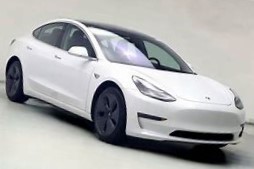Half of US electric vehicle (EV) drivers are thinking about going back to gasoline cars and trucks. The reasons are the high costs and not enough public charging stations. Many find EVs too expensive to buy and maintain. Also, the lack of charging stations makes long trips difficult, and their resale value isn’t good.
These issues are making some drivers want to go back to gas cars again. Time will tell how many actually do, but with electric car sales already down, it could seriously impact the market.
According to new findings from the 2024 McKinsey & Co. Mobility Consumer Global Survey, more electric vehicle (EV) drivers are thinking about switching back to gas-powered cars. In the United States, 46% of EV owners surveyed say they are likely to return to driving traditional gas automobiles.
A global survey of 30,000 people in 15 countries found that more than one-quarter (29 percent) of EV owners are likely to switch back to gas-powered cars. This goes to show this opinion is gaining traction globally and could impact markets outside of the United States.
The study found that Australia topped the list! 49 percent of EV owners in the land down under want to return to driving gas-powered cars.
The main reason respondents wanted to switch back to gas-powered vehicles was the lack of public charging infrastructure. Thirty-five percent said the current infrastructure is “not yet good enough for me,” highlighting their frustration.
Thirty-four percent of respondents noted that the total costs of EV ownership were “too high.” This concern over expenses is the second largest factor driving them to consider gas-powered vehicles again.
The list of reasons for disappointment in electric cars includes being unable to charge at home (24 percent) and too much worry and stress about charging (21 percent). Additionally, 16 percent cited changing mobility requirements, and 13 percent said they do not enjoy the driving experience.
Overall, 21 percent of global respondents said they would never want to switch to an electric vehicle. In contrast, 18 percent confirmed their next car will be an EV, an increase from 16 percent in 2022.
The White House has set a goal for 56 percent of all new vehicle sales to be electric by 2032. This ambitious target reflects an unwavering commitment to pushing electric vehicles.
In the past year, U.S. consumer interest in EVs has plateaued. As a result, companies like General Motors, Ford Motor, and Volkswagen have had to reduce or delay their EV goals.
While interest in electric cars has declined, EV prices have been dropping, especially for used models. Data from iSeeCars shows that used EV prices are, on average, 8 percent lower than those of used gas-powered cars.
Edmunds reports that the most affordable new electric cars for 2024 are the Nissan Leaf at $28,140, the Mini Electric Hardtop at $30,900, and the Tesla Model 3 at $38,990.
According to S&P Global Ratings, demand growth for EVs will be modest, ranging between 1 percent and 2 percent from 2024 to 2026. This indicates that while there will be some increase in demand, it is expected to be slow and steady.






